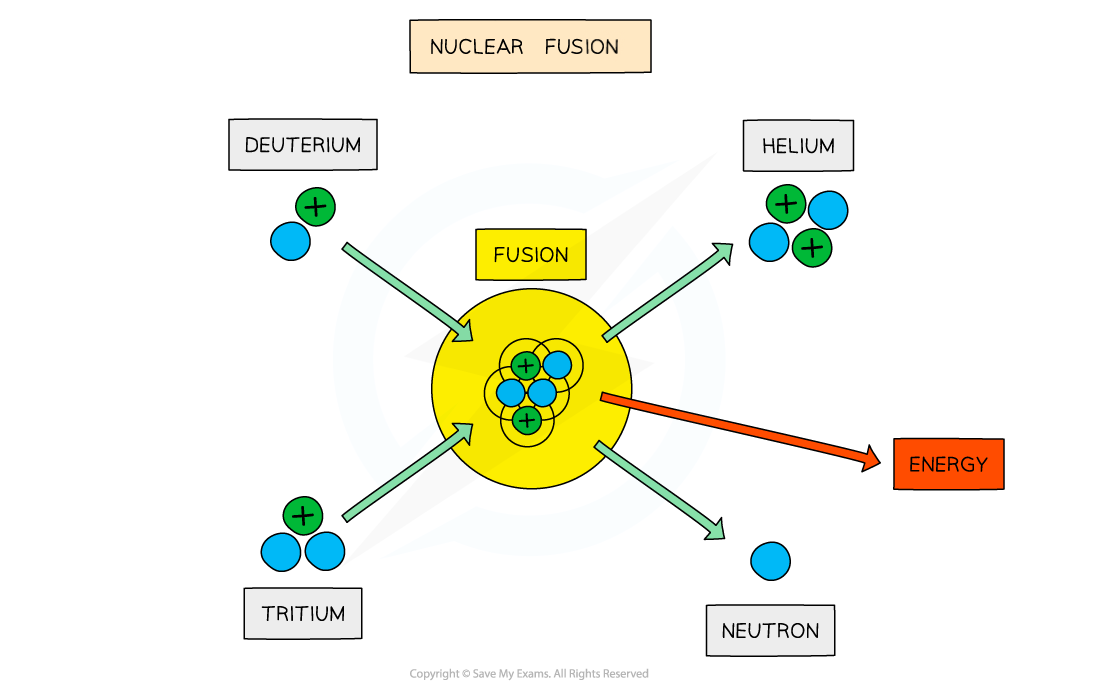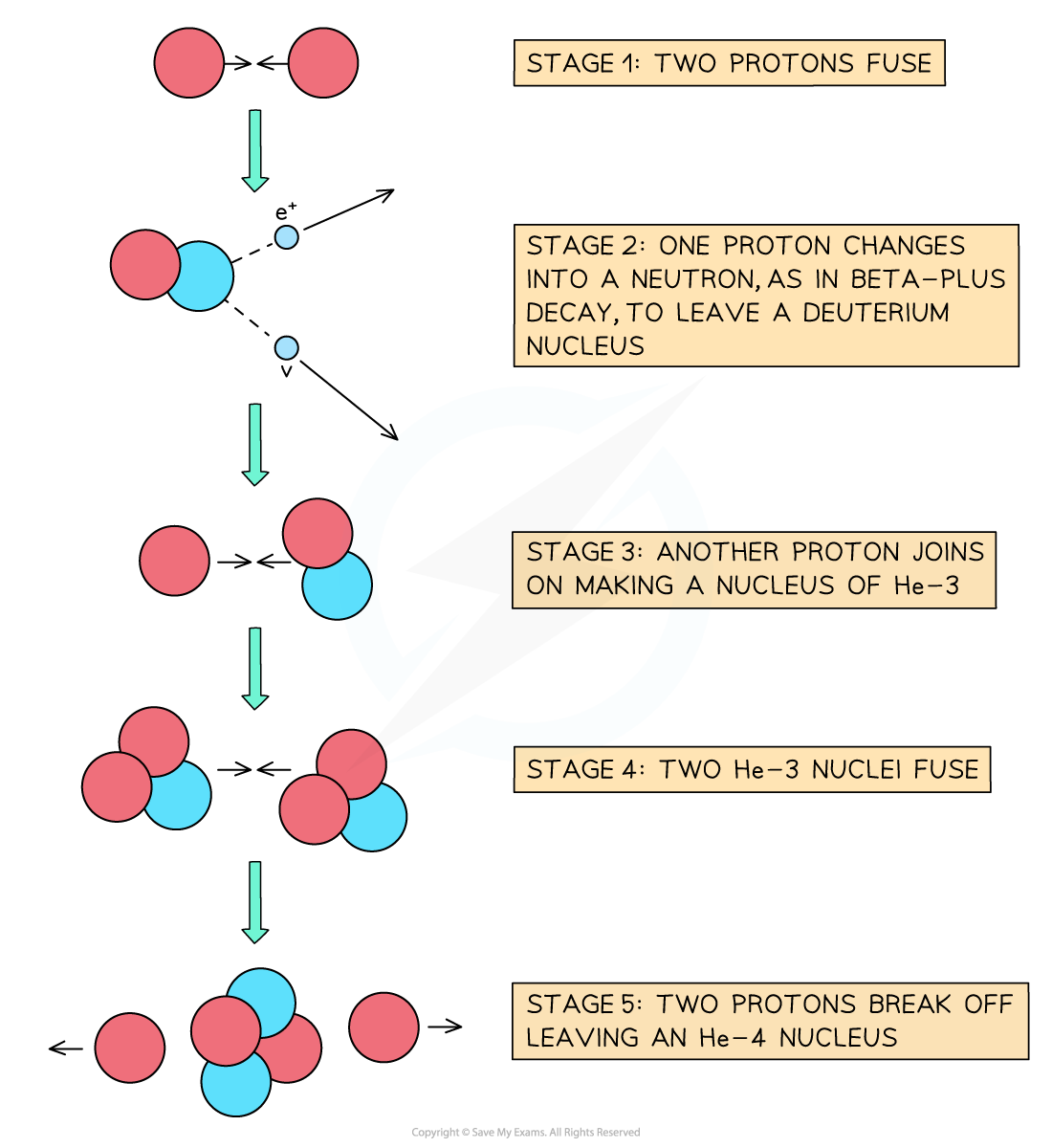Nuclear Fusion (Edexcel International A Level (IAL) Physics) : Revision Note
Nuclear Fusion
Fusion is defined as:
Small nuclides that combine together to make larger nuclei, releasing energy
Low mass nuclei (such as hydrogen and helium) can undergo fusion and release energy

The fusion of deuterium and tritium to form helium with the release of energy
Conditions for Nuclear Fusion
For two nuclei to fuse;
Both must have high kinetic energy, to overcome the electrostatic repulsion between protons
This can only be achieved in an extremely high-energy environment, such as star’s core
To achieve high enough kinetic energy the temperature must be on the scale of 100 × 106 Kelvin
Very high density is also required
Fusion Products
When two protons fuse, the element deuterium is produced
In the centre of stars, the deuterium combines with a tritium nucleus to form a helium nucleus, plus the release of energy, which provides fuel for the star to continue burning

Examiner Tips and Tricks
In the fusion process, the mass of the new heavier nucleus is less than the mass of the constituent parts of the nuclei fused together, as some mass is converted into energy.
Not all of this energy is used as binding energy for the new larger nucleus, so energy will be released from this reaction. The binding energy per nucleon afterwards is higher than at the start.

You've read 0 of your 5 free revision notes this week
Sign up now. It’s free!
Did this page help you?
